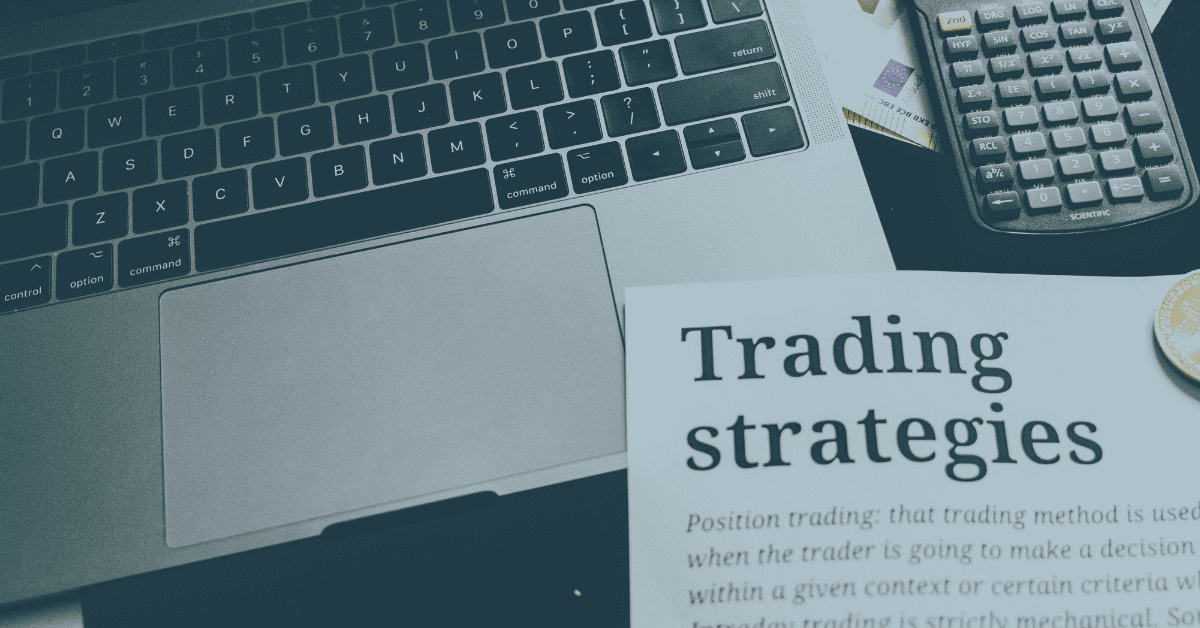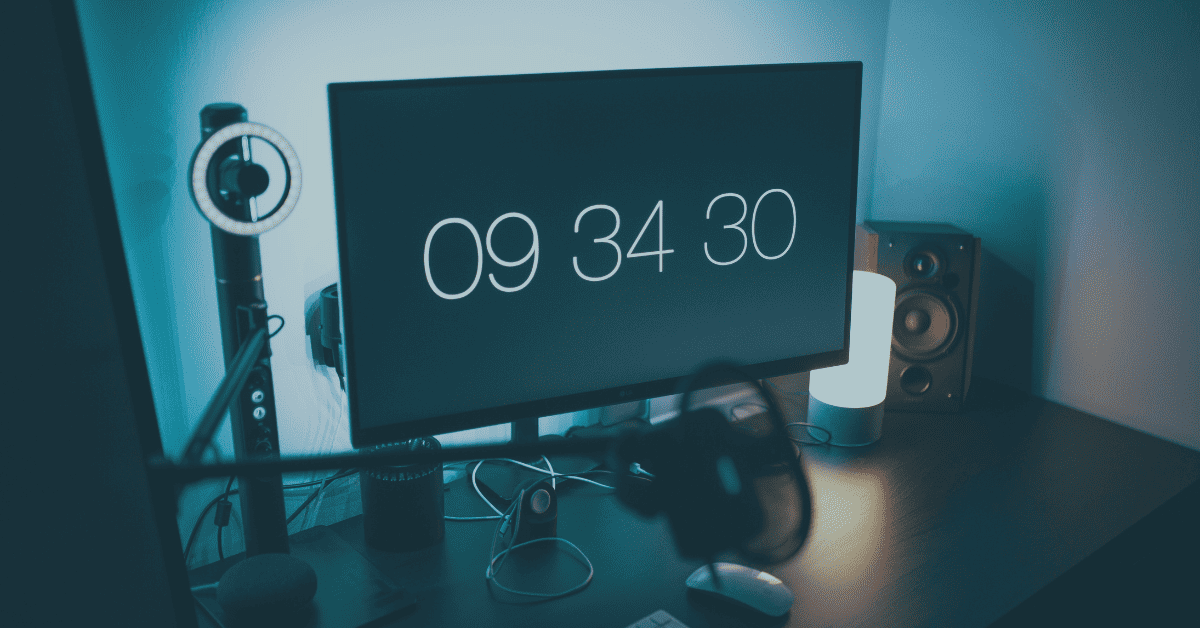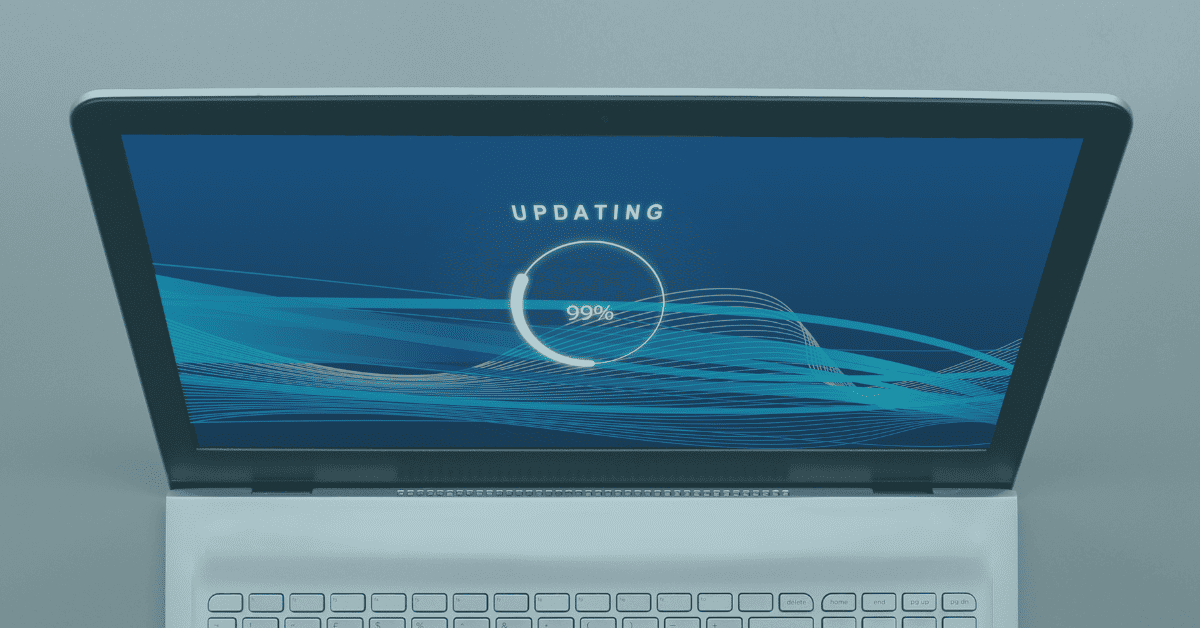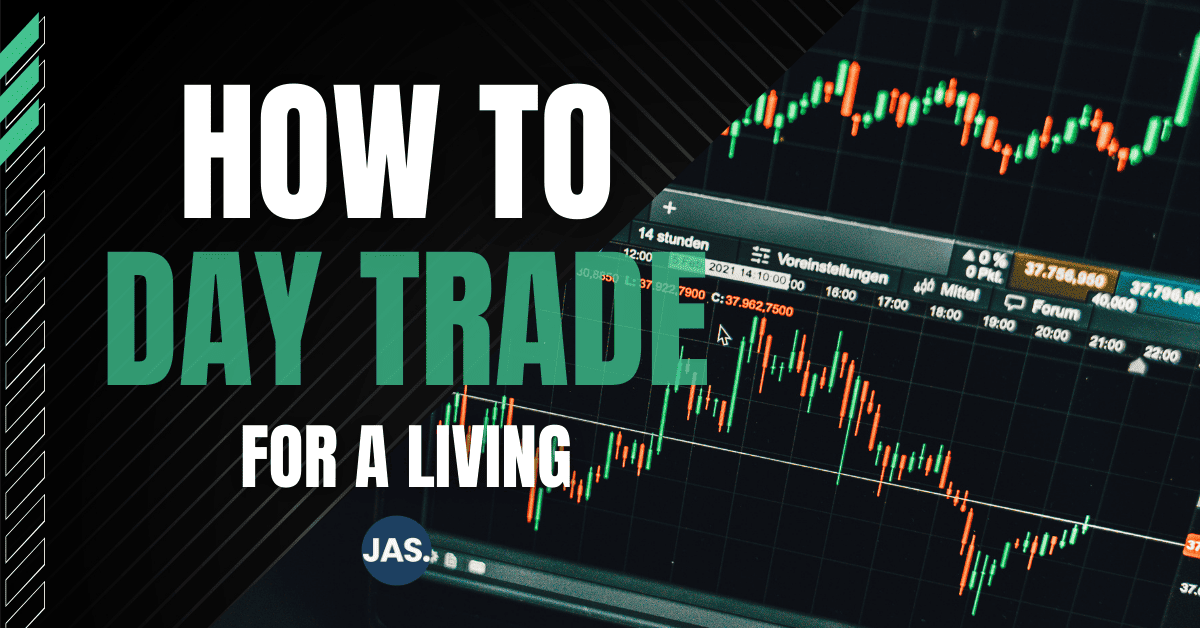How To Day Trade For A Living 2024: Beginner Tips, Pros & Cons
Day trading is not just a way to make money. Day trading is a lifestyle that promises excitement, flexibility, and the potential for unlimited profits for those who commit. While it can seem out of reach for many, with the right skills and knowledge, anyone can learn how to become a successful day trader.
But can you really earn a living from day trading? Absolutely. Earning enough profits from day trading to live is very possible, but many don’t get there because it’s a rough battle that requires consistency, discipline, and resiliency.
With the right guidance, it can make the journey a bit better for you. That being said, let’s dive into the steak and potatoes – tips, pros, and cons for how to day trade for a living.
What Is Day Trading?
Day trading is a popular strategy in the financial markets that involves buying and selling financial instruments within the same trading day. It is a faster paced approach (compared to other methods) that requires individuals to closely monitor the market movements and make quick decisions.
To make profits, day traders capitalize on short-term price fluctuations. To identify these fluctuations, traders use technical analysis to mark the patterns they notice on the charts. In day trading, the positions are closed out by the end of the day. In long term investing, positions can be held for days, weeks, months, and even years.
Why Should I Be A Day Trader?
If you’re reading this article, you’re obviously considering day trading to some degree. Speaking from experience, day trading is one of the most rewarding careers I could have asked for. It’s a skill that I can earn money from to do what matters most in life, which is to live it and enjoy it.
When I first started day trading, I wasn’t prepared for the way it would change me as person, and honestly most people aren’t. It has sharpened me as an individual, helping me to make decisions quickly with the information I have available. It has helped me take control of emotions and not react based on those emotions, but to rather be proactive.
From this glimpse, you can see that day trading goes beyond a skill of reading charts and making money in the markets. When you step into it, it will help sharpen you as a person if you allow it because only by sharpening those parts of yourself do you become a better trader.
How To Day Trade For A Living: Step-By-Step Instructions
Some people make day trading more complicated than it needs to be. They’ll try to use big fancy terms and tell you a million things you need to do to be successful. I’m here to tell you, don’t listen to any of it. It’s simple, all of it.
Here are very simple step-by-step instructions to get you on track to being a successful day trader:

1. Get your mindset right.
In order to successfully day trade for a living, it is crucial to have the right mindset. Trading in the financial markets can be highly stressful and unpredictable, and having a strong mental game is essential to navigate through the ups and downs of the market.
A key way to get your mind right it developing discipline. Day trading requires a high level of self control and the ability to stick to your trading plan, even when emotions are running high. This means avoiding urges to cheat on your rules due to fear or greed, and instead rely on a well thought out strategy.
Another key to get your mind right is managing your emotions. The financial markets can be bring our high emotions and it’s eady to let fear, greed, or frustration alter your trading decisions. Successful day traders understand the importance of keeping their emotions in check and making rational decisions.
Day trading is something that takes time and effort, seriously. Ask any successful trader how long it took them to be consistently profitable and you’ll be surprised. It’s not an overnight thing. Set realistic expectations and remind yourself of them on your good and bad days. By doing this, you’ll help yourself maintain focus and overcome any setbacks with a stronger mind.

2. Invest in your education. (Find a way to learn the basics.)
Investing in your education to learn how to day trade is crucial if you’re serious about pursuing it as a career. Without a solid foundation of knowledge and skills, it is impossible to survive in the day trading world. Without it, you’ll find yourself making costly mistakes and taking unnecessary losses.
Not only is education important, but immersing yourself in a trading community is very helpful too. A huge piece of advice when it comes to trading communities is to be careful not to use it as a means to compare and discourage yourself. It can be easy to be distracted by what others are saying and doing in the communities, so don’t let it throw you off track.
There are many ways to learn, but the best bang for your buck and most efficient way to learn is through courses and YouTube. You’ll see that every course has something different to offer because there are so many different trading styles. Everyone has different strategies, indicators they use, and methods of identifying chart patterns. It is 100% worth it to invest your time in learning a little bit from different traders until you see what fits you best.
Learning to day trade is not a one-time process, it is an ongoing journey. Trust me when I say you’ll never stop learning. Making consistent profits as a day trader requires continuous learning and adaptation because the markets change.

3. Choose what you’re going to trade.
Choosing what to trade is a decision that can greatly impact your success in the market. You can trade stocks, currencies, futures, options – the list goes on. Something that can really help you make your decision is learning a little bit about each to see what you gravitate towards the most.
It’s important to consider your personal preferences when choosing which asset to trade. Some traders may prefer the fast paced nature of the forex market, while others may enjoy analyzing and trading individual stocks.
Market volatility is another consideration traders make when choosing what to trade. Volatility is simply the way the prices increase and decrease over time. Each asset has a different level of volatility, which can affect profit and loss. High volatility typically presents an opportunity for quicker gains, while lower volatility presents more stable returns.
Other factors like liquidity can also make a difference in your decision. Liquidity is simply how easily an asset can be bough and sold without impacting the price too much. Assets with high liquidity are a popular choice for traders because it allows for quick and efficient execution of trades.

4. Find a broker and set up an account.
Different brokers specialize in different markets, such as stocks, forex, or commodities. Keep this in mind when you are researching brokers, so you choose one that matches your trading asset. For example, if you’re trading foreign exchange, Forex.com is a broker for that trading asset.
A tip when looking for brokers is to look at their pricing and commission rates. Brokers who offer competitive pricing and low commission rates can greatly impact your profitability as a day trader.
Once you’ve found a broker, the next step is setting up an account. This part is pretty self explanatory on the platform. This process typically involves providing personal information, like your name, address, social security number, and financial information.
Once your account is set up, it’s time to fund it! Brokers offer various funding options, like bank transfers or credit card deposits. You’ll want to keep in mind any fees they have associates with funding your account and the time it takes for the funds to be available for trading.
Remember to thoroughly research and compare different brokers. Prioritizing security, reputation, and customer support are things that can make all the difference in your trading experience.

5. Learn day trading strategies, test them, and stick to one.
A great starting point for beginners to learn day trading strategies is to study and analyze different methods that have been proven to be successful. This can come from the online courses and education you invest in for yourself, books, or even traders sharing info on YouTube.
When you’re learning these strategies, put them to the test in a simulated or demo trading account. This will help you practice applying the strategies without risking real money. Trust me, you’ll thank yourself for this later.
Testing these strategies will really show you what you need to know, what you need to refine, and it will definitely show you if that strategy is for you or not. Every trader has a trading preference, the same way different people have different learning preferences.
The name of the game is consistency. Once you’ve found a strategy that’s resonating with you, keep working with it and testing it. Continuously review and analyze the performance while making adjustments as the market conditions change.
What Equipment Do I Need To Start Day Trading for a Living?
There is no specific list of equipment that suits everyone’s needs, but there are some essential tools that every day trader should consider. By investing in the right equipment to create an optimal trading environment, you can increase your productivity and chances of success.

• Laptop
This may seem obvious, but a reliable computer or laptop is a necessity. Believe it or not, some people try to do all their trading from their phone, which is not smart if you’re really taking trading seriously.
Day trading involves analyzing market trends and executing trades in real time, so having a powerful and fast computer is essential. The last thing you want (actually what you don’t want at all) is for your computer to lag and mess up while you’re entering or exiting a trade. Every second matters in the trading world.
Here are some of the best laptops for trading stocks, crypto and forex.

• Monitor
A monitor is something that can be optional, but I highly suggest it. Having multiple displays allows you to display various charts and data simultaneously, like multiple stocks, different technical indicators, and your platform to execute trades.
Having at least 2 displays is really helpful, like your laptop and then an external monitor. Once you experience the convenience of having 2 displays, you’ll wonder why you didn’t do it sooner.
Here are some of the best trading monitors.

• Internet
Internet is a must, but great internet is an absolute must. The trading world can be super fast paced at times, and if your connection is not keeping up, it could cause huge losses that otherwise wouldn’t have happened.
It seems like a no brainer, but don’t rely on your local coffee shop’s WiFi.

• Software
Day traders must have reliable software and trading platforms. As you learned earlier, there are many different trading platforms available. Each of them offer different features and functionalities.
Not only are these softwares and platforms needed for you to place your trades, the tools are very handy. You can access real-time market data, customizable charts, and technical analysis tools.

Pros of Day Trading for a Living
Day trading has become an increasingly popular choice for individuals looking for financial independence and flexibility, and for good reason. There are many advantages to day trading, so let’s take a look at all the things that make it worth while.
• Earning potential is limitless.
Day trading allows you to tap into limitless earning potential. Unlike the typical job, where income is fixed or limited by the hours you work, day trading allows you to take advantage of the volatility and fluctuations of the financial markets and maximize profits.
A factor that contributes to the limitless earning potential in day trading is the ability to trade various financial instruments. Day traders can choose to trade stocks, options, futures, currencies, or commodities. The ability to diversify allows traders to adapt their strategies based on different market conditions to take advantage of various opportunities that arise throughout the day.
• Choose your own schedule.
Whether you’re a morning person or a night owl, you can tailor your trading schedule to your personal preferences and lifestyle. This type of flexibility is a significant benefit for anyone wanting to be a day trader for a living.
Many traders value the freedom to spending time with family, friends, pursue hobbies, or even travel while still being able to make a living. This freedom also means that you can adjust your active trade days depending on when the market is most volatile to increase your potential for profits.
• You can trade anywhere in the world.
The ability to trade from anywhere in the world gives day traders the freedom to work from the comfort of their own home, or to travel and trade while exploring new parts of the world. This is definitely an advantage for those who have a passion for travel, or even those who have always wanted a digital nomad lifestyle while still earning money.
Day trading from anywhere in the world also means that day traders can take advantage of different time zones and market opportunities. This enables day traders to trade certain time sessions in local time by staying in those areas, without having to trade super early or super late depending on your location and time session you’ve chosen.
• Potential to earn is year round.
Regardless of the season or economic conditions, day traders have the potential to generate income consistently. This also allows day traders to trade when it fits their preferences. For example, some traders don’t like day trading during the holiday seasons.
Unlike other professions that take a hit from market downturns or seasonality, day trading gives you the ability to trade a variety of different assets and securities. This means that you have options because each asset and security all move differently.
• A lot of trading options (time frames, how often you trade, etc).
Day trading gives you so many options. This has been mentioned a couple of times already but just goes to show how real this advantage is. There are many different styles of day trading, strategies, time sessions, etc. that all give you the ability to make it what you want.
Each trader has their own preferences, and that’s the beauty in day trading: you have options. With a wide range of financial instruments, day traders can diversify their portfolio and spread their risk.
• Low barrier of entry.
You can become a day trader with minimal prerequisites, unlike other professions that often require yeats of school, training, and experience. This means that anyone committed to learning the skill of fay trading can start their journey.
The lowest barrier of entry is trading Forex because there is no minimum amount of money needed to start. Whereas something like day trading stocks requires a minimum of $25,000 to start.
Cons of Day Trading for a Living
Day trading for a living can be exciting and super profitable. It’s also important to acknowledge the cons that come along with it. That doesn’t mean that it’s something you shouldn’t do, rather it helps prepare you for what’s in store.
• Huge learning curve & long hours.
While you don’t need a degree to start trading, there are long hours that come learning this skill. Day trading is a complex, constantly evolving, and there are lots of factors to look at when analyzing the markets.
This requires loads of time and effort to learn. It can be overwhelming for beginners who are just starting in day trading (been there, done that). With that being said, keep in mind along your journey that many individuals who are successful traders today also faced setbacks and losses before reaching consistent profits.
• There are too many options to choose from.
Having too many options is a blessing and a curse, a pro and a con. For beginners, having too many options to choose from can cause traders to second guess themselves and miss out on potential opportunities.
It can also be a time consuming process to consider all the options. This is why learning from experienced day traders and adopting their strategies can be very helpful for beginner day traders.
• Can take a while to become profitable.
Once of the main drawbacks in day trading is the fact that it can take a while to become profitable. This can be seen as a huge road block for those looking to make quick and consistent income.
I will be the first to tell you, if you haven’t heard already, that trading is not a get-rich-quick venture, or something you’ll be extremely profitable in within the first few months. All successful traders will tell you it takes time.
• Guaranteed to lose money.
In the world of day trading, there are no guarantees, except for one – the guarantee to lose money. That’s probably not what you wanted to hear, but it’s probably the best thing you’ll hear that will help you mentally prepare for your trading journey.
The guarantee to lose money serves as a reminder that trading involves risks and losses that are just a part of the process. No one can escape them. Traders must be prepared to accept and manage these losses in a responsible way to have a change at being successful long term.

Things To Consider Before Starting Day Trading for a Living
• Don’t go full time too soon.
While it may seem tempting to leave your job and jump into trading full time, rushing to do so can be a recipe for disaster. Don’t rush this process even once you become profitable. After all, keeping your job and bringing in profits from trading is income from multiple sources.
• Don’t throw all your money into an account.
Throwing all your eggs in one basket, meaning putting all your savings in an account, is extremely risky. You’d be surprised at how often people do this and lose everything. It’s important to humble yourself, set aside your ego, and start with an amount that’s not going to leave your pockets crying for help.
• The market is everchanging.
The dynamic nature of the trading market makes it both challenging and exciting. For traders, it’s essential to adapt to these fluctuations in order to be successful.
• Your emotions will try to get the best of you.
Fear, greed, and impatience are emotions you’ll experience in your trading journey. It’s crucial to understand this and do your best to work through the emotional times because these emotions can cloud your judgement and lead to impulsive and irrational trading decisions, ones that you will regret every time.
• Every successful day trader has lost money. Losing money is a part of the process.
Losing money is an inevitable part of the process. Every successful trader has had their fair share of losses. The key here is to learn from these losses. Study the charts, study your strategy, and study yourself to see where things went wrong and correct it.
Conclusion & Wrapping Up
Day trading can be a great option for those looking to make a living from the stock market. It’s important for aspiring day traders to approach it with a solid understanding. Successful trading requires discipline, consistency, and patience. It’s a long term commitment to growing your skills.
Keep in mind the things you’ve learned throughout this blog. We’ve gone over the pros and cons – there are pros and cons to everything, and in day trading, the pros far outweigh the cons. But it’s still important to understand both sides.
We’ve laid out step-by-step instructions that are practical and simple to follow. The main 2 to focus on are: mindset and education. The rest of the steps are simple, but without these two, the rest don’t matter.
The equipment you’ll need to get started is super basic like we’ve talked about. Don’t get too caught up in doing too much with your equipment upfront. Keep your mind on the goal: becoming better each day and getting to the profits.
Lastly, don’t forget about the considerations mentioned before starting in day trading. These considerations will actually really help get your mindset right going into your day trading journey. Print them out and stick them where you can see them daily as a reminder to yourself.
While day trading for a living can be challenging, it’s also rewarding for those who commit the time and effort it takes to be great. By applying the things we’ve talked about in this blog, you can increase your chances of success with your day trading journey. Remember, it’s a long term game – stay focused and the profits will come.
Frequently Asked Questions
Is it realistic to day trade for a living?
While some individuals have been able to achieve success and financial independence through day trading, there are challenges and risks associated with it. But the answer is simple: yes, day trading for a living is very realistic. There are so many day traders who are full time and successful.
How much money do you need to day trade for a living?
If you’re trading forex, for example, there is no minimum requirement of money that you need to place in an account. Going this route, the money needed is for your equipment, education, and initial investment into your accounts. This is great news because you can work with your budget.
Is $1000 enough to day trade?
$1,000 can be plenty to get you started on your trading journey. If you use it wisely, it can cover all you need from education to your accounts. If you have a smaller budget to worth with, consider maximizing on free tools and resources until you have more money to invest into yourself.
How much money do day traders with $10000 accounts make per day on average?
The answer to this question is very dependent on personal performance and the percentage that individual trader is bringing in daily. Most traders calculate their percentages on a month-by-month basis, not per day. For example, if someone makes a 5% return that month, they would have made $500.
Why do you need $25,000 to day trade?
The need for $25,000 to day trade comes into play with stocks. To day trade stocks, a minimum of $25,000 is required to be maintain in your margin account. This minimum amount is not a requirement when trading an asset like forex, for example.

